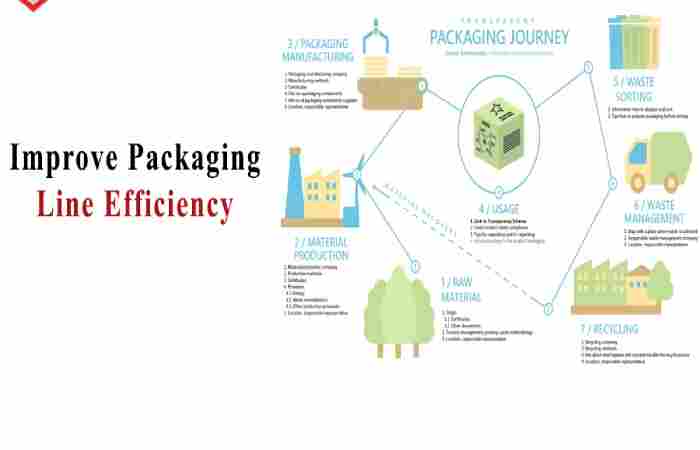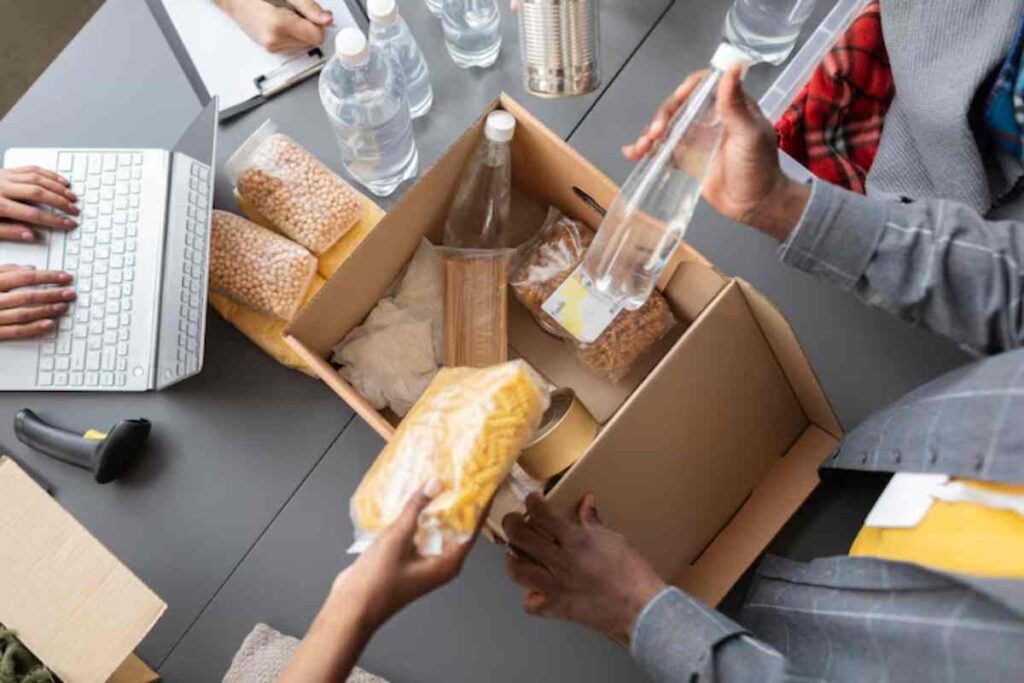Introduction: The Future of Packaging Efficiency

The packaging industry is evolving faster than ever. As we step into 2025, businesses are under pressure to deliver faster, smarter, and more sustainable packaging solutions without compromising quality. Whether you’re in manufacturing, eCommerce, or logistics, improving packaging productivity is no longer optional — it’s essential.
But how do you do that effectively? The key lies in combining automation, data intelligence, and human innovation to create a packaging process that’s not only efficient but adaptable to market shifts.
Let’s dive into the top ways to improve packaging productivity in 2025 and future-proof your operations.
1. Embrace Automation for Faster Packaging
Automation is at the core of every high-performing packaging operation in 2025. With advanced machinery and robotic systems, businesses are now able to increase output while cutting human error and fatigue.
Benefits of Automation:
-
Higher Speed: Machines can pack, seal, and label products 3–5x faster than manual labor.
-
Consistency: Every package meets the same standard of quality.
-
Lower Labor Costs: Automation reduces dependency on manual labor.
-
24/7 Operation: Machines don’t need breaks — perfect for high-volume production.
Tip: If you’re new to automation, start small — automate a single task like carton sealing or labeling before scaling across the full production line.
2. Use AI and Machine Learning for Smarter Operations
Artificial intelligence (AI) and machine learning are taking packaging to a new level in 2025. Instead of just executing tasks, systems can now predict, optimize, and learn from data.
How AI Boosts Productivity:
-
Predictive Maintenance: AI predicts when a machine will need repair before it fails.
-
Quality Control: AI cameras detect defects in real-time to prevent waste.
-
Production Forecasting: Helps plan packaging schedules based on demand trends.
-
Process Optimization: Analyzes data to identify bottlenecks and delays.
When your machines talk to each other and your team, the entire operation becomes faster and more efficient.
3. Streamline Workflow with Lean Packaging Principles
Sometimes, productivity issues don’t come from technology — they come from inefficient workflows. Applying lean manufacturing principles can drastically reduce waste, time, and errors.
Steps to Streamline Packaging Workflow:
-
Map Your Current Process: Identify slow points or repetitive steps.
-
Reorganize Workstations: Keep essential tools and materials within easy reach.
-
Eliminate Redundancy: Remove unnecessary steps that don’t add value.
-
Set Performance Benchmarks: Track metrics like units per hour or defect rates.
Pro Tip: Conduct “Gemba Walks” — visit the packaging floor and observe where time or motion is wasted. Small layout changes can improve speed dramatically.
4. Train and Empower Your Workforce
Even with automation and AI, your employees remain the backbone of productivity. In 2025, companies focusing on employee development and engagement see higher efficiency across all areas.
Smart Training Practices:
-
Offer hands-on technical training for operating new equipment.
-
Implement cross-training so staff can fill multiple roles.
-
Use augmented reality (AR) and simulation-based training tools.
-
Promote team-based goals to boost motivation and collaboration.
When employees understand the technology they work with, errors go down and performance goes up.
5. Go Green with Sustainable Packaging
Sustainability and productivity go hand-in-hand in 2025. Eco-friendly packaging isn’t just good for the planet — it also cuts costs by minimizing waste and material use.
Ways to Improve Sustainability:
-
Use lightweight, recyclable materials to reduce shipping costs.
-
Optimize packaging design to fit products perfectly, avoiding excess filler.
-
Reuse and recycle waste materials wherever possible.
-
Partner with suppliers who share your green goals.
For instance, switching from bulky cardboard boxes to flexible, compostable packaging can reduce storage space and improve packing speed.
6. Adopt IoT and Real-Time Monitoring
The Internet of Things (IoT) is transforming packaging lines into smart ecosystems. In 2025, sensors and connected devices can monitor every part of your process — from machine performance to environmental conditions.
IoT Advantages:
-
Real-Time Data: Monitor line performance, output rate, and downtime instantly.
-
Remote Control: Manage multiple facilities from a single dashboard.
-
Smart Alerts: Receive notifications for temperature, humidity, or mechanical issues.
-
Data Integration: Combine IoT data with ERP systems for total visibility.
Tip: Start with IoT-enabled scales, conveyors, or labelers — they’re easy to integrate and immediately boost traceability and performance tracking.
7. Improve Collaboration Across Departments
Packaging productivity isn’t just a production issue — it’s a cross-department challenge. Your design, procurement, and logistics teams must all align for efficiency.
Collaboration Strategies:
-
Use cloud-based project management tools like Asana or Monday.com.
-
Schedule weekly syncs between design, supply, and operations teams.
-
Share real-time dashboards so everyone knows packaging status and inventory.
When teams communicate seamlessly, materials arrive on time, designs are print-ready, and packaging flows without disruption.
8. Upgrade Your Packaging Design Software
Design plays a major role in productivity. The more efficient the design, the easier it is to assemble, pack, and ship.
Benefits of Advanced Design Software:
-
Create virtual prototypes before production.
-
Test durability and sizing with 3D modeling.
-
Automatically calculate material usage and cost savings.
-
Integrate directly with packaging machines for error-free production.
Example: A packaging engineer using 3D CAD software can optimize a box design in minutes, avoiding physical testing and reducing material costs by up to 15%.
9. Track KPIs and Continuous Improvement
To truly improve productivity, you need to measure and review results consistently.
Key Metrics to Track:
-
Throughput Rate: Units packed per hour/day.
-
Downtime: Time lost to maintenance or changeovers.
-
Material Waste: Percentage of packaging materials wasted.
-
OEE (Overall Equipment Effectiveness): Measures total production efficiency.
Review these KPIs weekly and identify patterns — is one machine slower? Is waste increasing? Continuous improvement requires constant visibility.
10. Use Cloud-Based Systems for Flexibility
In 2025, cloud-based packaging management systems are the new norm. They allow real-time collaboration, centralized data storage, and remote monitoring.
Cloud Advantages:
-
Access from anywhere, anytime.
-
Integrate with ERP, CRM, and logistics software.
-
Simplify reporting and analytics.
-
Scale easily with business growth.
This technology ensures that every stakeholder — from warehouse staff to C-suite executives — has access to accurate data for faster decision-making.
11. Optimize Your Supply Chain
Your packaging line is only as efficient as your supply chain. Material delays or poor vendor communication can ruin productivity.
Supply Chain Optimization Tips:
-
Partner with reliable suppliers with real-time tracking systems.
-
Use predictive ordering to prevent stockouts.
-
Maintain safety stock for high-demand materials.
-
Regularly evaluate suppliers for on-time performance.
By synchronizing packaging operations with supplier timelines, you minimize downtime and keep production flowing.
12. Encourage Innovation and Feedback
The best improvement ideas often come from your own team. Encourage innovation by asking workers to share suggestions for streamlining tasks or improving equipment usage.
-
Create an idea submission system.
-
Reward employees whose ideas are implemented.
-
Conduct monthly review sessions to discuss improvements.
This not only builds engagement but also creates a culture where everyone contributes to higher productivity.
Final Thoughts: Build a Future-Ready Packaging Line
Improving packaging productivity in 2025 isn’t just about buying fancy machines — it’s about combining people, technology, and process optimization to build a smarter operation.
By investing in automation, AI, IoT, sustainable practices, and team training, you can:
Boost output and reduce costs
Cut downtime and waste
Improve quality and customer satisfaction
Stay ahead of your competition
The packaging leaders of tomorrow are those who act today. Take a deep look at your current operations, apply these strategies, and turn your packaging process into a true productivity powerhouse.

